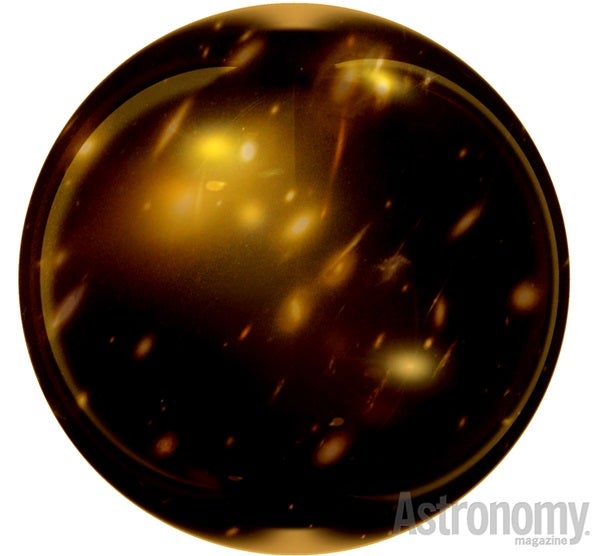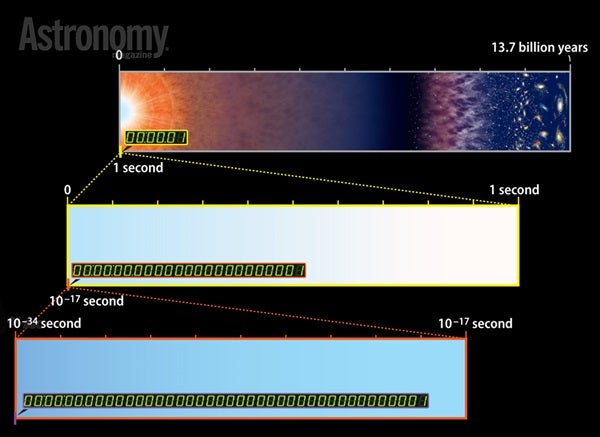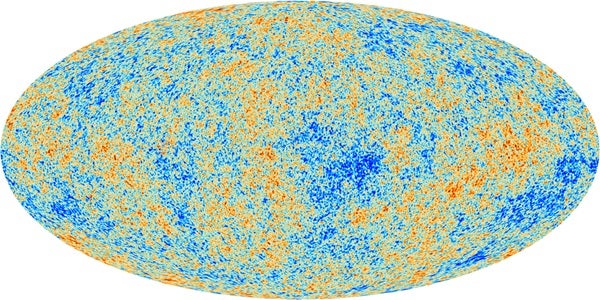Ever since the Big Bang theory of the origin of the universe developed in the 1920s and 1930s, the idea has had its skeptics. The radical concept stated that the universe is expanding; run time backwards, and all matter and energy intersect at a point in time 13.82 billion years ago, the moment of the “bang.”
Big Bang cosmology has received enormous support from observational tests. In 1929, American astronomer Edwin Hubble observed galaxies generally recede from us; that was the lynchpin of the evidence.

Bringing the universe to your door. We’re excited to announce Astronomy magazine’s new Space and Beyond subscription box – a quarterly adventure, curated with an astronomy-themed collection in every box. Learn More >>.
In 1964, Bell Laboratories physicists Arno Penzias and Robert Wilson discovered the faint echo of the Big Bang — the cosmic microwave background radiation (CMB). Along with the expansion of the universe and the CMB, the Big Bang model also explains nucleosynthesis, the process by which light elements formed in the early universe.
But the Big Bang does not yet explain it all. Although by the 1970s the Big Bang seemed to outweigh competing ideas about the formation of the cosmos, it left some problems unsolved.
The first was causality. To astronomers’ amazement, they found the CMB’s temperature was uniform everywhere they looked, to a high level of precision. If the universe began as a hot, primeval fireball, why would temperatures everywhere be so uniform? Leaving this enigma unsolved would threaten the Big Bang idea.
Second, came the flatness problem. The cosmological number Omega (W) describes both the universe’s shape and fate. Astronomers found Omega’s value equals 1, which seemed highly coincidental. A number less than 1 would mean space is open and will expand forever; greater than 1 would mean a closed universe and an eventual “Big Crunch,” with the cosmos falling back on itself.
Third, was the magnetic monopole problem. The cosmos is filled with electric monopoles, particles like electrons and protons. But astronomers have not observed any magnetic monopoles. The lack of these particles bothered particle physicists.
In 1981, to solve these problems, scientists presented a new idea that expanded the Big Bang theory and added weight to it. Alan Guth of the Massachusetts Institute of Technology wrote a paper that described the “inflationary” model of cosmology, developed with his colleagues Andrei Linde, Paul Steinhardt, and Andy Albrecht.
Inflation proposes a short period of expansion — 10–34 second — in the early universe. As Mario Livio of the Space Telescope Science Institute says, “All inflation theories … grab a speck of space and blow it up by a factor of 1050.” Inflation resolves some questions surrounding the Big Bang.
Guth and his colleagues imagined a huge energy field in the early universe, which they called the false vacuum. As it expanded, the false vacuum was in a perilous state of equilibrium, and it had to decay into a real vacuum, leading to an enormous release of energy. Inflation resulted from the decay. The released energy acted as an antigravity force, giving the universe a kick. The universe exploded by many factors in an instant.
Viewed as a radical concept when Guth published his paper, the idea has received substantial support from a vast number of astrophysicists since. And observational tests of the Big Bang all have supported the theory. In 1992, the Cosmic Background Explorer (COBE) satellite discovered temperature fluctuations in the CMB, further evidence of the Big Bang. Later, the Wilkinson Microwave Anisotropy Probe (WMAP) and the Planck satellite refined this picture, adding weight to it. Other verifications of the Big Bang have helped convince skeptical astronomers that it occurred.
In the first years of a new century, evidence suggests the Big Bang occurred and that inflation was a key component of the cosmos’ earliest moments.













